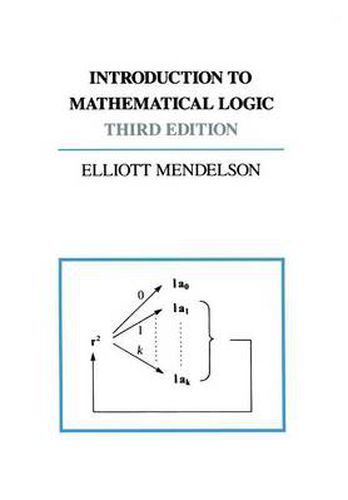Readings Newsletter
Become a Readings Member to make your shopping experience even easier.
Sign in or sign up for free!
You’re not far away from qualifying for FREE standard shipping within Australia
You’ve qualified for FREE standard shipping within Australia
The cart is loading…






This title is printed to order. This book may have been self-published. If so, we cannot guarantee the quality of the content. In the main most books will have gone through the editing process however some may not. We therefore suggest that you be aware of this before ordering this book. If in doubt check either the author or publisher’s details as we are unable to accept any returns unless they are faulty. Please contact us if you have any questions.
This is a compact mtroduction to some of the pnncipal tOpICS of mathematical logic . In the belief that beginners should be exposed to the most natural and easiest proofs, I have used free-swinging set-theoretic methods. The significance of a demand for constructive proofs can be evaluated only after a certain amount of experience with mathematical logic has been obtained. If we are to be expelled from Cantor’s paradise (as nonconstructive set theory was called by Hilbert), at least we should know what we are missing. The major changes in this new edition are the following. (1) In Chapter 5, Effective Computability, Turing-computabIlity IS now the central notion, and diagrams (flow-charts) are used to construct Turing machines. There are also treatments of Markov algorithms, Herbrand-Godel-computability, register machines, and random access machines. Recursion theory is gone into a little more deeply, including the s-m-n theorem, the recursion theorem, and Rice’s Theorem. (2) The proofs of the Incompleteness Theorems are now based upon the Diagonalization Lemma. Lob’s Theorem and its connection with Godel’s Second Theorem are also studied. (3) In Chapter 2, Quantification Theory, Henkin’s proof of the completeness theorem has been postponed until the reader has gained more experience in proof techniques. The exposition of the proof itself has been improved by breaking it down into smaller pieces and using the notion of a scapegoat theory. There is also an entirely new section on semantic trees.
$9.00 standard shipping within Australia
FREE standard shipping within Australia for orders over $100.00
Express & International shipping calculated at checkout
Stock availability can be subject to change without notice. We recommend calling the shop or contacting our online team to check availability of low stock items. Please see our Shopping Online page for more details.
This title is printed to order. This book may have been self-published. If so, we cannot guarantee the quality of the content. In the main most books will have gone through the editing process however some may not. We therefore suggest that you be aware of this before ordering this book. If in doubt check either the author or publisher’s details as we are unable to accept any returns unless they are faulty. Please contact us if you have any questions.
This is a compact mtroduction to some of the pnncipal tOpICS of mathematical logic . In the belief that beginners should be exposed to the most natural and easiest proofs, I have used free-swinging set-theoretic methods. The significance of a demand for constructive proofs can be evaluated only after a certain amount of experience with mathematical logic has been obtained. If we are to be expelled from Cantor’s paradise (as nonconstructive set theory was called by Hilbert), at least we should know what we are missing. The major changes in this new edition are the following. (1) In Chapter 5, Effective Computability, Turing-computabIlity IS now the central notion, and diagrams (flow-charts) are used to construct Turing machines. There are also treatments of Markov algorithms, Herbrand-Godel-computability, register machines, and random access machines. Recursion theory is gone into a little more deeply, including the s-m-n theorem, the recursion theorem, and Rice’s Theorem. (2) The proofs of the Incompleteness Theorems are now based upon the Diagonalization Lemma. Lob’s Theorem and its connection with Godel’s Second Theorem are also studied. (3) In Chapter 2, Quantification Theory, Henkin’s proof of the completeness theorem has been postponed until the reader has gained more experience in proof techniques. The exposition of the proof itself has been improved by breaking it down into smaller pieces and using the notion of a scapegoat theory. There is also an entirely new section on semantic trees.